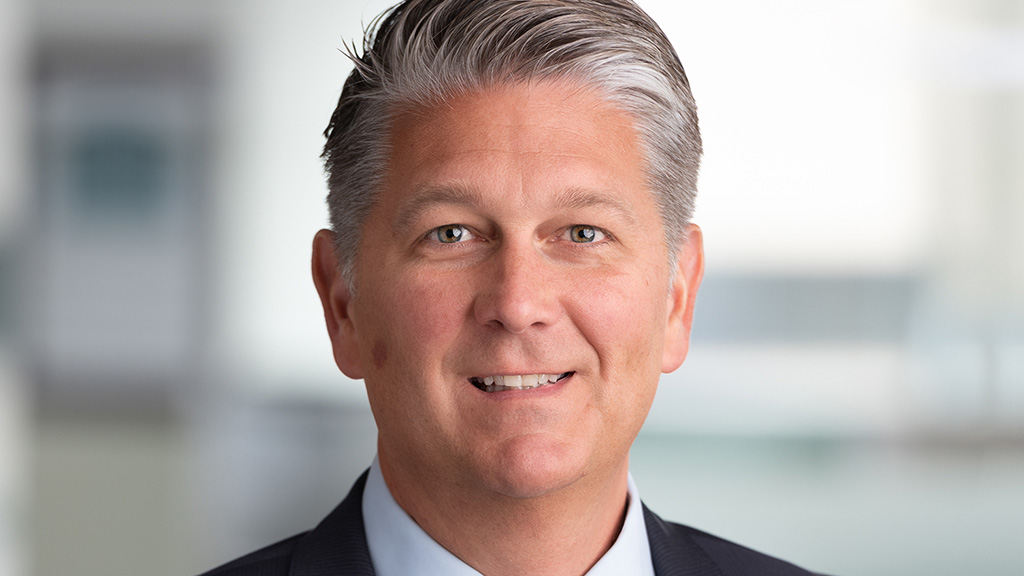Leaders learn from history and each other at Mount Vernon
Executives from eight financial trade associations gathered to network, deepen cooperation at Washington Presidential Library
- August 5, 2024 |
-
 WILLIAM EHART
WILLIAM EHART

Among George Washington’s leadership attributes was his willingness to listen to peers with whom he didn’t always agree, said Heather Soubra, director of the George Washington Leadership Institute in Mount Vernon, Va.
“When people ask what made George Washington unique as a leader, one thing was his ability to listen, to be able to avoid getting attached to one way of doing something and to surround himself with people who had very diverse perspectives. He saw that as the strength of the team,” said Soubra, who is also an executive coach and former senior vice president of strategic initiatives at the International Dairy Foods Association.
In that spirit, the top staff of eight major financial trade associations gathered at the George Washington Presidential Library at Mount Vernon in May for a summit to deepen ties and cooperation and learn from each other.
The summit included historical lectures and CEO panels on current association topics. Soubra and Peter Cressy, director of executive leadership programs at the George Washington Leadership Institute and former CEO of the Distilled Spirits Council of the United States, led a presentation on the first president’s leadership approach.
The Financial Services Association Leadership Summit was the idea of Wayne Chopus, CEO of the Insured Retirement Institute (IRI).
In addition to Chopus, the attending CEOs were Ken Bentsen of the Securities Industry and Financial Markets Association; Dale Brown of the Financial Services Institute; Marc Cadin of Finseca; Chuck DiVencenzo of the National Association for Fixed Annuities; Kevin Mayeux of the National Association of Insurance and Financial Advisers; Susan Neely, outgoing leader of the American Council of Life Insurers; and Eric Pan of the Investment Company Institute.
Brown, Cadin, Chopus and Mayeux are members of CEO Update’s CEO Roundtable.
Helpful community
Chopus started gathering financial association CEOs for a dinner series when he took the reins at IRI five years ago. As a new association executive — he had come from the insurance industry — it was important to get to know his inside-the-Beltway peers. That, along with other networking opportunities including the U.S. Chamber of Commerce Committee of 100 and CEO Update’s CEO dinners, are essential ways to learn and give back, he said.
“It’s an incredibly helpful community of peers willing to share what they’ve learned in their experiences and their onboarding, and it creates an environment where you can pay it forward when somebody else is new in a role,” Chopus said.
The summit had the added benefit of including the CEOs’ senior staff to the networking mix. All told, 48 executives were in attendance. “I saw it as investing in the future of our industry,” he said.
“Based on the feedback we’ve seen and the survey results, there was a lot of value placed on the relationships built by folks who have similar roles at different trades that didn’t know each other as well,” he said.
So much value that participants are interested in holding the summit every year. Cadin, CEO of Finseca, said some members of his team want to meet with their peers even more often than that.
“It went exceptionally well,” said Cadin. “Wayne and the IRI team did a great job, and the Mount Vernon team did a great job. It was a great setting.”
“This, first and foremost, was about fellowship and building and deepening relationships across the organizations,” he said. “One of the traps is to think about other organizations within your sector as competition.
“When there are no relationships among the teams, it’s easy to put on competitor labels and imbue motives on behaviors. Some elements of competition exist among associations that represent similar segments within an industry or profession. But if you think about why we exist as an association community, it’s about bringing individual companies and people together to solve things we can’t solve individually,” Cadin said.
“Part of our job as CEOs is to break down barriers within our companies and within our associations so that the advocacy and membership and communications and business development and finance functions work well together, in concert with the direction of the board,” he said.
“Those silos get exacerbated when it’s between associations because the HR person from one association doesn’t know the person from another,” Cadin said. “Or they don’t understand what that group does, or the advocacy person gets territorial about their strategy. We’ve got to continue to break down those barriers.”
Inspiring setting
The George Washington Leadership Institute, located in the presidential library, hosts a variety of sessions for seasoned executives, middle managers and emerging leaders in government agencies, associations and nonprofit educational institutions, Soubra said. The library opened in 2013, and the institute’s programs are held in the David M. Rubenstein Leadership Hall, named for the founder of private equity firm The Carlyle Group in recognition of his support for the library.
“There’s something about just being in this space together at this beautiful setting, where they’re anchoring into those timeless leadership principles,” Soubra said. “It’s a way to remind ourselves of who we aspire to be as leaders.”
